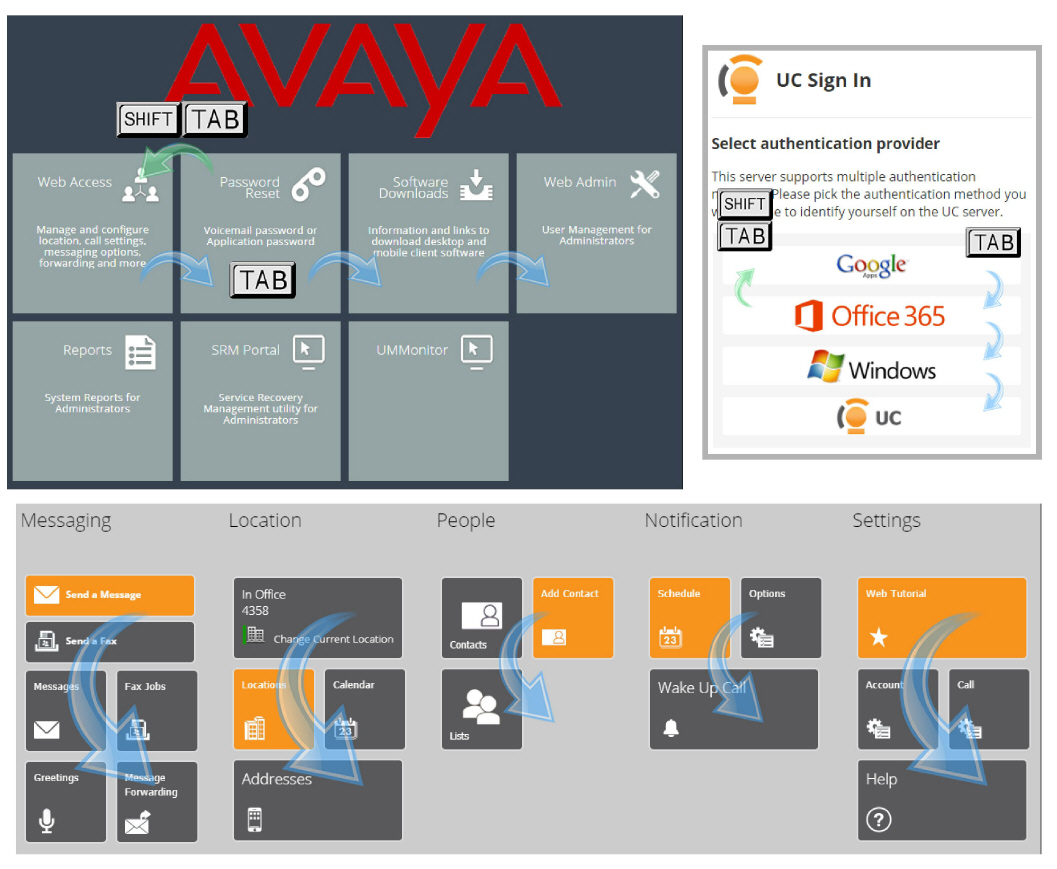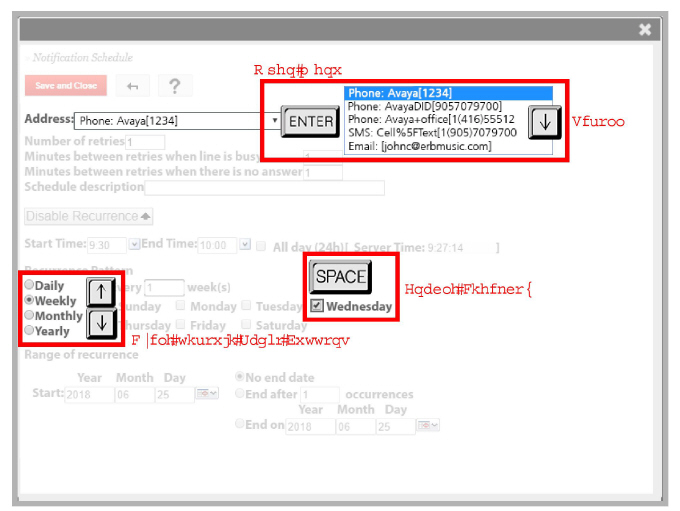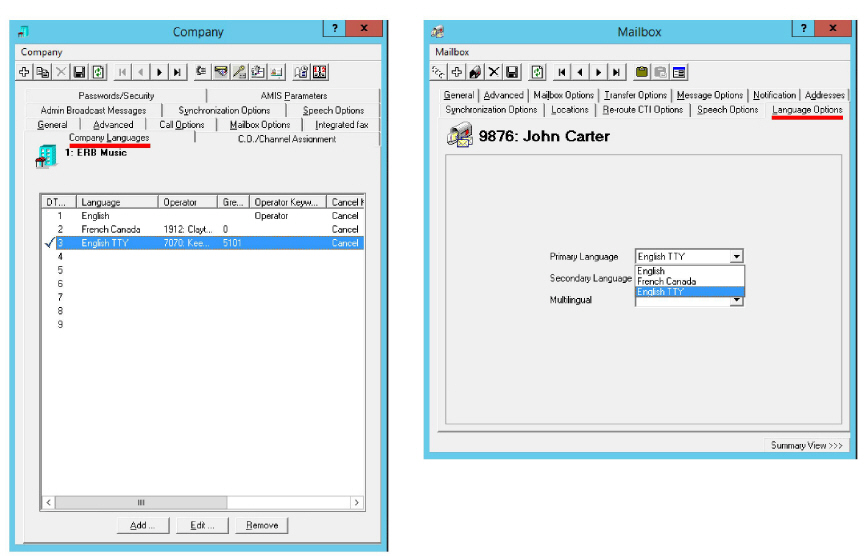Accessibility
Introduction
Avaya Messaging provides greater accessibility to people with special needs. Messaging offers 508 compliance and TTY integration.
508 Compliance
Complying with the 508 standard in Messaging means that the user interface for a program must be usable to clients without the use of a mouse. The user interface for launching and navigating through the Web Access program provides access to all areas using the keyboard alone.
The keyboard commands are shown here:
|
Keystroke
|
Function
|
|

|
Skip to next item.
|
|

|
Return to the previous item.
|
|

|
Enable or Select the current item.
|
|
 
|
Expand / Collapse menus.
|
|
 
|
Scroll Up and Down within a menu.
Toggle the current radio button.
|
The login, splash screen and Web Access interface are all 508 compliant.
TTY Integration
Avaya Messaging includes support for TTY devices on your corporate voicemail system. TTY compatibility is provided through a language pack which can be downloaded from PLDS.
Install the language pack according to the instructions found in the Server Installation Guide under Language Pack Installation on page 365.
Once the language pack for TTY English has been installed, it can be chosen as the default language for your company and for each user’s mailbox.
|
Hint: It is recommended that a separate telephone number be used for the company for TTY language prompts. This prevents TTY callers from getting no response on their device from a voice enabled system, and hearing callers receiving unintelligible signals on their handset from the TTY service.
|
Voice Recordings and TTY
The TTY system automatically converts system prompts into signals compatible with TTY devices. However, voice recordings made on-site cannot be converted.
To build greetings that appear on TTY devices, the greeting must be typed into a software program that converts the text into a TTY compatible audio format, which is then saved as a WAV file. These audio files can then be uploaded into Messaging to replace the voice recordings for that company with TTY prompts.
|
Note: It is recommended that the TTY feature be used only with shorter messages and prompts, such as for managing your mailbox and for internal transfers. For use with longer texts, such as with the Telephone User Interface (TUI), using Messaging Web Access is preferred.
|









